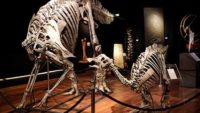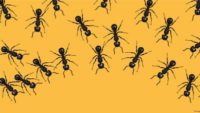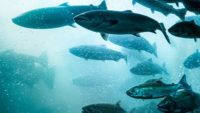Evolutionary scientists announced the discovery of what they claim are the oldest green-algae fossils—which look remarkably like modern, living seaweeds. The millimeter-sized, multicellular plant fossils were found in China in rocks claimed to be over one billion years old.1 A trio of paleontologists from Virginia Tech, Chinese Academy of Sciences in Nanjing and University of Chinese Academy of Sciences, B… More… …read more Source: icr.org
By Ken Ham In a recent news release from North Carolina State University (NCSU), the first-ever report of dinosaur cartilage cells having been discovered was announced. Several bones, including juvenile skull bones from the herbivorous duck-billed dinosaur Hypacrosaurus, were found in the Upper Cretaceous (Campanian) Two Medicine Formation of northern Montana, conventionally dated between 83–72 million years ago. In many juvenile animals, and in humans (up to late teens or early twenties), parts of the skull contain cartilage, which eventually calcifies and fuses into the bone. In many juvenile animals, and in humans (up to late teens or early twenties), [More]
Does the RNA world hypothesis explain the origin of life, and what should we make of the pig-monkey chimera? …read more Source: creation.com
By Dr. Joe Francis Dr. Joe Francis of The Master’s University answers important questions about viruses and COVID-19 (coronavirus). …read more Source: AIG Daily
Gary Bates interviews fossil researcher Vance Nelson …read more Source: creation.com
By Ken Ham A recent news item caught my eye. It stated that the soldiers of Turtle ants show that evolution can go in reverse. This might seem like a startling announcement until you look closely at what they observed and reported. The researchers were somewhat surprised to learn that this size variation almost perfectly correlates to the width of the tunnels these ants live in. There are over 100 species of Turtle ants of the genus Cephalotes. They mostly live in the trees of tropical areas all over the world. Ten of these species have no soldier ants (basically [More]
Astronomers have discovered a Jupiter-sized extrasolar planet (exoplanet) orbiting so close to its host star that it is “perilously close” to the distance where it can be torn apart by gravitational forces.1-3 Astronomers call these planets “hot Jupiters” because they are rather large planets with masses comparable to that of Jupiter, and their nearness to their host stars causes them to … More… …read more Source: icr.org
The favoured story of human evolution is now struggling …read more Source: creation.com
Cichlid fish are a top biological model for the study of diversification because of their unique ability to adapt to a wide range of lake and river environments. They also produce a startling array of unique traits. For creation scientists, they are particularly interesting because they provide an opportunity to illustrate how creatures are able to track their environments and respond accordingly to produce traits that allow them to succeed… More… …read more Source: icr.org
How did the Fall affect fungi? …read more Source: creation.com
Scientists claim to have discovered DNA-like molecules inside specialized cells taken from a type of duckbill dinosaur. Could it be actual dino DNA? Some paleontologists remain unconvinced, since DNA lasts only thousands of years before degrading, and dinosaur fossils are supposedly millions of years old. Do their objections make sense? The big picture of Earth history hangs in the balance. Alida Bailleul at the Chinese Aca… More… …read more Source: icr.org
By Ken Ham In a recent news release from the University of Colorado Boulder, researchers claimed to have found evidence suggesting the earth was once a “water world.” They were working in the Panorama district in Northwestern Australia’s outback and had been on the hunt for exposed “ancient” oceanic crust. An outcrop of supposedly 3.2-billion-year-old oceanic crust occurs in this area and was the focus of the research. In other words, they believed that this study showed the earth of 3.2 billion years ago was completely covered by water. Modern seawater has an isotope ratio of 18O to 16O, which [More]
Researchers discover pea seedling roots grow towards the sound of gurgling water. …read more Source: creation.com
By Ron Tagliapietra How God is the ultimate foundation for mathematics. Math has sometimes been revered as supreme and final truth…until a mathematician proved we must look higher. …read more Source: AIG Daily
By Ken Ham A team of researchers at Tel Aviv University in Israel decided to take a closer look at a common salmon parasite called Henneguya salminicola to determine how it could survive in low-oxygen salmon muscle tissue. What they found was startling—H. salminicola does not need oxygen at all! While there are single-celled bacteria that don’t need oxygen, this is the first multicellular organism they’ve found that doesn’t utilize oxygen. This parasite is in the same phylum as corals, jellyfish, and anemones, and it even has what looks like typical stinging cells, except H. salminicola doesn’t use them to [More]
It seems obvious that when Britain’s trees were covered in black coal soot during the industrial revolution that the numbers of black-colored peppered moths would increase. But several recent studies indicate that a change to black coloration in creatures in response to pollution, called industrial melanism, may not be directly related to camouflage. Claire Goiran studies marine ecology for the University of … More… …read more Source: icr.org
Where does the evidence point to the post-Flood boundary being in this difficult area? …read more Source: creation.com
National Geographic’s ideas about the origin of life merely masquerade as science. Yet they say creationists are at war with science?! …read more Source: creation.com
Just how big were they, and what are the implications for the Ark? …read more Source: creation.com
Would animals have to run for their lives as soon as they got off the ark? Would some go extinct as they got hunted by predators? …read more Source: creation.com
By Dr. David Menton As far as stereotypes go, cavemen make easy targets—especially when transplanted into the twenty-first century. …read more Source: AIG Daily
Can biological pigment molecules really survive over a billion years? …read more Source: creation.com
Why do we have solar wind? Startling discoveries by Voyager 2 show its great benefits to life. …read more Source: creation.com
Loved or loathed, rabbits certainly fit the biblical narrative, not an evolutionary one. …read more Source: creation.com
By Ken Ham A recent popular science article announced that “genes that have evolved from scratch are both more common and more important than previously believed.” These so-called “orphan genes . . . appear to have no relatives and are often responsible for unique characteristics and abilities of organisms.” Of course, evolutionists attribute the existence of such genes to naturalistic evolution. But did brand-new genetic information really evolve? Dr. Nathaniel Jeanson, who earned his PhD in cell and developmental biology from Harvard University, shared this with me about these two new studies: In these studies, evolutionists continued their quest to [More]
Wooly mammoths once roamed North America, northern Europe, and Siberia. Possibly the last of their kind perished as a dwindling population on Wrangel Island, northeast of Siberia. Who wouldn’t wonder why wooly mammoths no longer roam our planet? The process of gathering clues to their extinction can evoke the same feelings found in good mystery novels. New research into ancient DNA gives another solid clue toward two old culprit theor… More… …read more Source: icr.org
Homo erectus and modern human origins …read more Source: creation.com

















![We Shall Behold Him [Live] We Shall Behold Him [Live]](http://img.youtube.com/vi/KZ3H3lg9NZM/0.jpg)



























